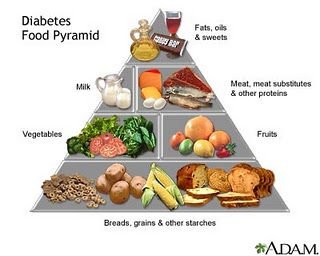In the UK we have the third highest obesity rate in the world, with 22.4% of the population obese. Between 50-60% of the population are also overweight and these statistics are rising each year. Alongside the obesity rates diabetes prevalence has almost doubled since 1997 from around 2.5% percent to almost 5%. What could be going wrong?
Diabetes and physical activity
Yes it is true that we as a nation are pretty lazy, the majority of us crawl out of bed in the morning, clamber into the car, drive to work, get a lift to the correct floor and then plonk ourselves in front of a desk all day, before driving back home, sitting our ass on the couch and watching the next instalment of some crappy soap opera until it’s time for bed.
It has been proven that just 30 minutes of physical activity daily has been shown to reduce the prevalence of diabetes by 58%.
Around 40% of us meet the guidelines set by the government for physical activity. This has actually increased by 8% since 1997. So for some exercise could be a factor in diabetes prevention but for many it is far beyond that.
The physiological effect of poor nutrition
Eating simple/refined carbohydrates can cause blood glucose levels to spike, triggering a rapid release of insulin from the pancreas. Over eating foods that create excessive blood sugar responses means the body has to over-react which will often lead to the pancreas producing more insulin than is required. This can cause the blood sugars to drop below normal (reactive hypoglycaemia), this can lead to symptoms including fatigue, light-headedness, headache, emotional instability, mental dullness, depression etc.
With years of such abuse to the body the pancreas can get burned out and at the same time tissues can become resistant to insulin, meaning the cells are not absorbing the free glucose. This is a deadly combination and will lead to continually high blood glucose levels and eventually a diagnosis of type 2 diabetes.
Conventional dietary advice
Could it be true that the information being fed to us by most doctors, dieticians, heart and diabetic associations are contributing to the increase in diabetes and the ever expanding waist of the nation?
Simple answer… YES
Take a look at the food pyramid below, this is typically what the above professionals will work towards when dealing with someone with diabetes and below is also a link taken from Diabetes UK website and their 10 steps to eating well.
What is wrong with the conventional approach?
Okay let’s look at this simply. Blood glucose levels and thus insulin secretion are immediately affected by carbohydrate based foods.
The carbohydrates that have the most significant effect on our blood glucose levels are obviously sweet foods containing processed sugar, refined carbohydrate products such as white bread, white pasta, cakes, pastries, cereals etc. However many fruits and starchy vegetables will also have a dramatic impact on our blood glucose levels. Wholegrain breads, pastas, rice are also providing excessive amounts of carbohydrates for most individuals, especially considering, most of us sit on our bums all day.
The government guidelines are based around the thinking that a low-fat high-carbohydrate diet is going to be good for our health. For those of you that tolerate carbohydrates well, this may be the case. However it is predicted that up to 75% of the population are carbohydrate sensitive, meaning they function better on a higher protein and good fat diets with fewer starchy vegetables and fruits, and high levels of non starchy vegetables.
Let’s look back at the pyramid. The largest section is made up of starchy carbohydrates (bread, potatoes, corn, and cereal), next sections fruits and vegetables, next milk and proteins and the final section fats, oils and sweets!! These recommendations seriously make me wonder what was being smoked at the time these were being put together.
I am not here to bash other professional health practitioners or health associations, but maybe there needs to be a review of the literature being taught to the above practitioners, as the information being relayed to the general public seems to be substandard and far from truthful.
Below is what I would see as the appropriate way to eat for someone struggling with their blood glucose levels, although generic I am confident this would attain much improved results in the fight against type 2 diabetes.
- Treats – 0-2 Portions per week (Deserts, Juices etc)
- Low Glycemic index fruits – 0-2 portions per day (Berries, apple, pear, orange, grapefruit)
- Starchy vegetables – 0-2 portions per day (Sweet potato, sweetcorn, parsnips)
- Beans, lentils and some grains – 0-2 portions per day (All types of beans and lentils, quinoa, brown rice, oats)
- Non Starchy Vegetables – Ulimited portions per day (Asparagus, Fennel, Peppers, Watercress, Broccoli, Garlic, Radish, Peas, Brussels sprouts, Kale, Rocket, Celery, Wheatgrass, Leeks, Runner Beans, Cauliflower, Tomatoes, Mangetout, Spinach, Chives, Onions)
- Protein from animal sources – 3-5 portions per day (Chicken, turkey, grass fed beef and lamb, oily fish, other fish and seafood, eggs)
- Fats and oils – 2-4 portions per day (Nuts and seeds (plain and raw), olive oil, coconut oil, supplement quality fish oil)
I am personally not the biggest fan of generic nutrition recommendations, but I see they have their place if we are going to reach out to a large sum of the population. I would always urge anyone embarking on making some serious changes to their diet to consult a certified nutritionist or naturopathic doctor.
Contact Steve Grant Health
To learn more out how Steve Grant Health can assist you on your journey, please fill out the enquiry form below.
Please note that depending on your specific circumstances and goals, Steve may recommend that you work with one of the specialist practitioners within his network of trusted professionals.
If you have been referred by a clinician, please complete the form and ensure that you state who has referred you or have your practitioner email Steve direct to make a referral that way.
Click the button below to open the client enquiry form:
[widgetkit id=”643″]



